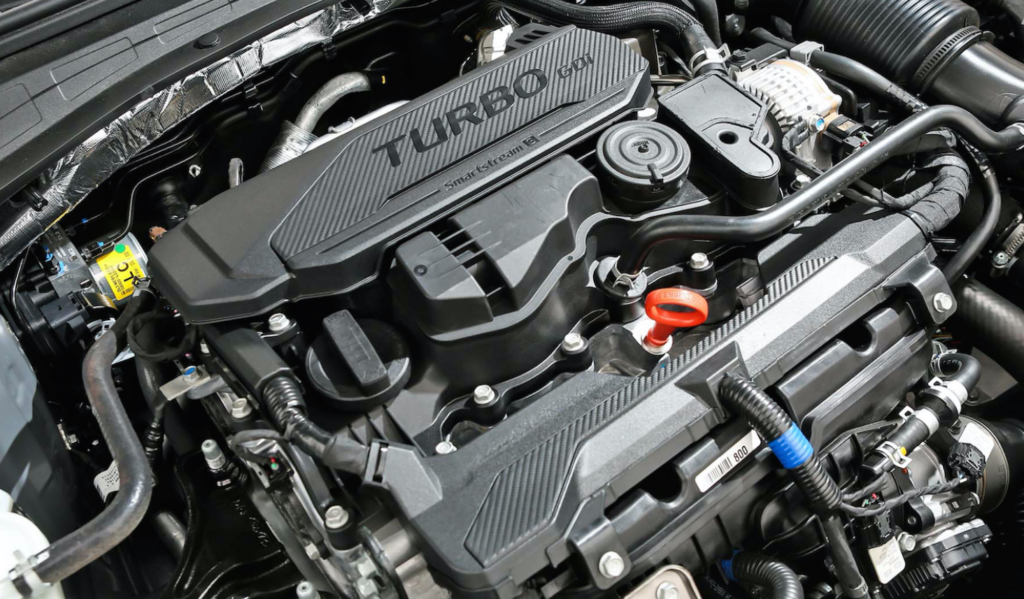Understanding the 2025 Kia K5’s Oil Capacity: A Guide to Engine Health
Understanding the 2025 Kia K5’s Oil Capacity: A Guide to Engine Health
Introduction
With great pleasure, we will explore the intriguing topic related to Understanding the 2025 Kia K5’s Oil Capacity: A Guide to Engine Health. Let’s weave interesting information and offer fresh perspectives to the readers.
Table of Content
Understanding the 2025 Kia K5’s Oil Capacity: A Guide to Engine Health

The 2025 Kia K5, a mid-size sedan renowned for its stylish design and robust performance, requires meticulous maintenance to ensure its longevity and optimal operation. One crucial aspect of this maintenance is understanding the vehicle’s oil capacity. This article provides a comprehensive guide to the 2025 Kia K5’s oil requirements, highlighting its importance for engine health and performance.
Engine Options and Oil Capacity:
The 2025 Kia K5 is likely to offer a range of engine options, each with its own specific oil capacity. The most common engine options are:
- 2.5-liter naturally aspirated four-cylinder engine: This engine is expected to have an oil capacity of 5.0 quarts.
- 1.6-liter turbocharged four-cylinder engine: This engine may have an oil capacity of 4.5 quarts.
- Hybrid powertrain: The hybrid variant of the K5 is anticipated to use a smaller engine and have a slightly lower oil capacity, potentially around 4.0 quarts.
Why is Oil Capacity Important?
The oil capacity of an engine directly impacts its performance and longevity. Engine oil serves several critical functions:
- Lubrication: Oil reduces friction between moving parts, minimizing wear and tear.
- Cooling: Oil helps dissipate heat generated by the engine, preventing overheating.
- Cleaning: Oil removes contaminants and debris from the engine, ensuring optimal operation.
- Sealing: Oil forms a seal between moving parts, preventing leaks and ensuring smooth operation.
Overfilling or Underfilling Oil: The Risks
-
Overfilling: Exceeding the recommended oil level can lead to:
- Increased pressure: Excess oil can create excessive pressure within the engine, potentially damaging seals and gaskets.
- Oil foaming: The oil may foam, reducing its effectiveness as a lubricant.
- Reduced engine efficiency: Excess oil can hinder engine performance and reduce fuel economy.
-
Underfilling: Insufficient oil can lead to:
- Increased wear and tear: Lack of lubrication can cause excessive friction, leading to premature engine wear.
- Engine overheating: Inadequate oil circulation can result in overheating, potentially causing engine damage.
- Engine seizure: In extreme cases, insufficient oil can lead to a complete engine seizure, requiring costly repairs.
Checking and Maintaining Oil Levels:
Regularly checking and maintaining the oil level is essential for optimal engine health.
- Checking the oil level: Use the dipstick provided in your vehicle to check the oil level. The dipstick should be wiped clean before insertion.
- Adding oil: If the oil level is low, add the appropriate type and quantity of oil. Refer to your owner’s manual for recommended oil type and viscosity.
- Oil changes: Regular oil changes are crucial for removing contaminants and maintaining engine performance. The recommended oil change interval for the 2025 Kia K5 will likely be around 5,000 to 7,500 miles, but consult your owner’s manual for specific recommendations.
FAQs Regarding Oil Capacity:
-
Q: Where can I find the exact oil capacity for my 2025 Kia K5?
- A: The most accurate information regarding oil capacity can be found in your vehicle’s owner’s manual.
-
Q: What type of oil should I use in my 2025 Kia K5?
- A: The owner’s manual will specify the recommended oil type and viscosity for your specific engine.
-
Q: How often should I check the oil level?
- A: It’s advisable to check the oil level at least once a month or before long journeys.
-
Q: What happens if I accidentally overfill the oil?
- A: If you overfill the oil, it’s best to consult a mechanic to drain the excess oil.
-
Q: What are the signs of low oil level?
- A: Low oil level can be indicated by a warning light on the dashboard, a rattling sound from the engine, or a decrease in engine performance.
Tips for Maintaining Optimal Oil Levels:
- Use the recommended oil type: Always use the oil type specified in your owner’s manual.
- Check the oil level regularly: Make it a habit to check the oil level before long journeys or at least once a month.
- Change the oil at the recommended intervals: Adhering to the recommended oil change schedule is crucial for engine health.
- Avoid overfilling the oil: Always refer to the dipstick and ensure the oil level is within the recommended range.
- Address any oil leaks promptly: If you notice any oil leaks, consult a mechanic for repair as soon as possible.
Conclusion:
Understanding the 2025 Kia K5’s oil capacity is essential for maintaining optimal engine health and performance. By adhering to the recommended oil change schedule, checking the oil level regularly, and using the appropriate oil type, you can ensure the longevity and efficiency of your vehicle’s engine. Remember to consult your owner’s manual for specific information regarding oil capacity, type, and maintenance recommendations.








Closure
Thus, we hope this article has provided valuable insights into Understanding the 2025 Kia K5’s Oil Capacity: A Guide to Engine Health. We thank you for taking the time to read this article. See you in our next article!